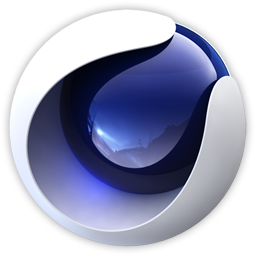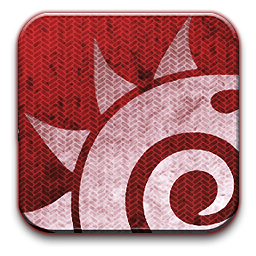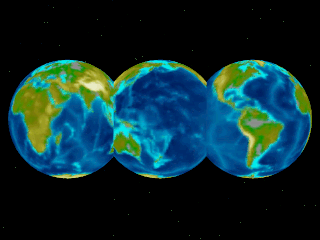
Amiga demos are demos created for the Amiga home computer.

Autodesk Maya, commonly shortened to just Maya, is a 3D computer graphics application that runs on Windows, macOS, and Linux, originally developed by Alias and currently owned and developed by Autodesk. It is used to create assets for interactive 3D applications, animated films, TV series, and visual effects.

Cinema 4D is a 3D software suite developed by the German company Maxon.

LightWave 3D is a 3D computer graphics program developed by LightWave Digital. It has been used in films, television, motion graphics, digital matte painting, visual effects, video game development, product design, architectural visualizations, virtual production, music videos, pre-visualizations and advertising.
ANIM is a file format, used to store digital movies and computer generated animations, and is a variation of the ILBM format, which is a subformat of Interchange File Format.

Scientific visualization is an interdisciplinary branch of science concerned with the visualization of scientific phenomena. It is also considered a subset of computer graphics, a branch of computer science. The purpose of scientific visualization is to graphically illustrate scientific data to enable scientists to understand, illustrate, and glean insight from their data. Research into how people read and misread various types of visualizations is helping to determine what types and features of visualizations are most understandable and effective in conveying information.
TurboSilver was one of the original 3D raytracing software packages available for the Amiga and for personal computers in general.

Dark Castle is a 1986 platform game for Macintosh that was originally published by Silicon Beach Software. The original game was designed and animated by Mark Pierce and programmed by Jonathan Gay with Real Sound by Eric Zocher. In Dark Castle, a young hero named Duncan tries to make his way to the evil Black Knight, dodging objects as well as solving occasional puzzles.
The Advanced Visualizer (TAV), a 3D graphics software package, was the flagship product of Wavefront Technologies from the 1980s until the 1990s.
Aladdin4D is a computer program for modeling and rendering three-dimensional graphics and animations, currently running on AmigaOS and macOS platforms. A-EON Technology Ltd owns the rights and develops current and future versions of Aladdin4D for AmigaOS, MorphOS & AROS. All other platforms including macOS, iPadOS, iOS, Linux & Windows are developed by DiscreetFX.
Amiga software is computer software engineered to run on the Amiga personal computer. Amiga software covers many applications, including productivity, digital art, games, commercial, freeware and hobbyist products. The market was active in the late 1980s and early 1990s but then dwindled. Most Amiga products were originally created directly for the Amiga computer, and were not ported from other platforms.
A multimedia computer is a computer that is optimized for multimedia performance.

The demo effect is a name for computer-based real-time visual effects found in demos created by the demoscene.
VistaPro is 3D scenery generator for the Amiga, Macintosh, MS-DOS, and Microsoft Windows. It was written by John Hinkley as the follow-up to the initial version, Vista. The about box describes it as "a 3-D landscape generator and projector capable of accurately displaying real-world and fractal landscapes." It was published by Virtual Reality Labs and developed by Hypercube Engineering. The latest versions were published and developed by Monkey Byte Development.
Scala is a producer of multimedia software. It was founded in 1987 as a Norwegian company called Digital Visjon. It is headquartered near Philadelphia, Pennsylvania, USA, and has subsidiaries in Europe and Asia.

Imagine was the name of a cutting-edge 3D modeling and ray tracing program, originally for the Amiga computer and later also for MS-DOS and Microsoft Windows.
This article deals with productivity software created for the Amiga line of computers and covers the AmigaOS operating system and its derivatives AROS and MorphOS. It is a split of the main article, Amiga software.

In 3D computer graphics, 3D modeling is the process of developing a mathematical coordinate-based representation of a surface of an object in three dimensions via specialized software by manipulating edges, vertices, and polygons in a simulated 3D space.
Maxon Computer GmbH is a German software company that produces software for content creators. The company’s product lines include the 3D software Cinema 4D, the Red Giant tools for editing, motion design and filmmaking, Redshift renderer and the digital sculpting and painting software ZBrush as well as the mobile sculpting app Forger. The company’s cross-platform benchmarking application Cinebench is used by developers, reviewers and users to evaluate hardware performance.







